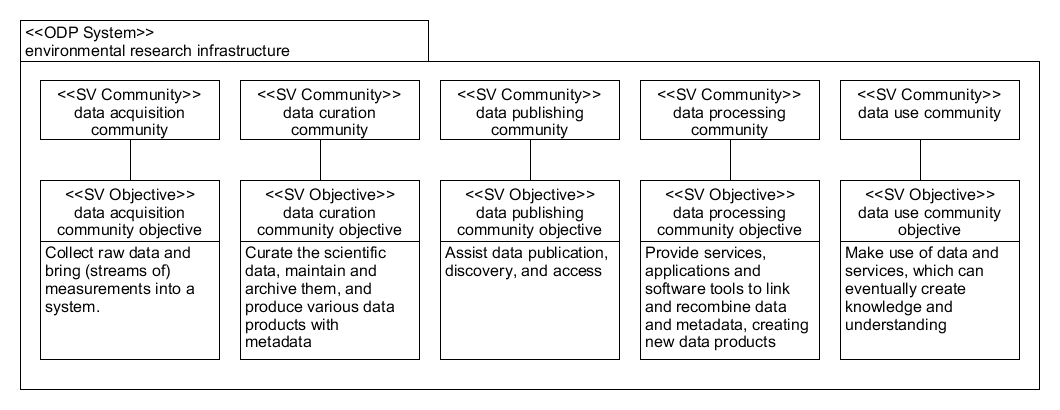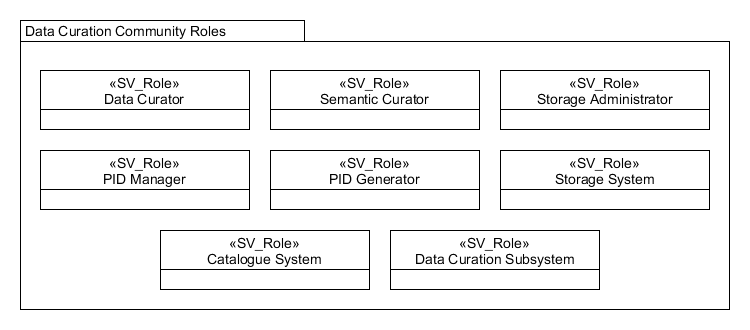Communities[edit]
SV communities are modelled using an object diagram. The following table describes the elements used in that diagram.
Table 1 Notation for community diagrams
| Figure
|
Description
|
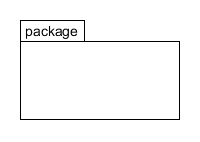
|
A Package, in UML notation, is a grouping element. Package is used "to group elements, and to provide a namespace for the grouped elements".
A package may contain other packages, thus providing for a hierarchical organization of packages.
Classes, objects, use cases, components, nodes, node instances etc. can all be organized as packages, enabling a manageable organization of the elements of UML models.
|

|
Objects are used to represent communities and objectives in the RM.
The name refers to the represented entity(community or community objective).
The stereotype indicates the namespace where the object is grouped. Sometimes the stereotype can be an image. The image can be used in place of the figure.
The ODP stereotype for community is an icon of group of people with keyboards:
The ODP stereotype for notation is an icon of group four black and grey arrows converging to a point:
Each community is linked to its corresponding objective by a line
|
In the following example diagram (Figure 1) the package represents an Environmental research infrastructure. The infrastructure contains five objects which are all communities and each community is linked to a community objective.
Figure 1 Example of a community diagram
SV Roles are represented using a class diagram with packages and classes
Table 2 Notation for role diagrams
| Figure
|
Description
|

|
A Package, in UML notation, is a grouping element. Package is used "to group elements, and to provide a namespace for the grouped elements".
A package may contain other packages, thus providing for a hierarchical organization of packages.
Classes, objects, use cases, components, nodes, node instances etc. can all be organized as packages, enabling a manageable organization of the elements of UML models.
|
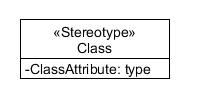
|
Classes are used to represent roles in the RM.
Classes can have additional compartments to express properties (called attributes) and behaviours (called methods). Omitting the compartments means that the behaviour and attributes are undefined at the time of building the diagram.
Name tag indicates the name of the class. Typically, classes are named using no spaces and starting each word that makes up the name, i.e., camelcase.
The stereotype indicates the namespace where the class is grouped. Sometimes the stereotype can be an image. The image can be used in place of the figure. For ODP, the stereotype for role is a mask:
|
In the example diagram the package represents the data curation community. The community contains eight role classes. The ENVRI RM provides a detailed description of each role in text.
Figure 2 Example of a SV Role diagram
SV Behaviours are represented using an activity diagram with packages and activities
Table 3 Notation for behaviour diagrams
| Figure
|
Description
|

|
A Package, in UML notation, is a grouping element. Package is used "to group elements, and to provide a namespace for the grouped elements".
A package may contain other packages, thus providing for a hierarchical organization of packages.
Classes, objects, use cases, components, nodes, node instances etc. can all be organized as packages, enabling a manageable organization of the elements of UML models.
|
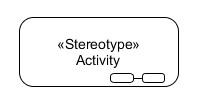
|
Activities are used to represent behaviours in the RM.
Name tag indicates the name of the behaviour. Behaviours are named using a short phrase that describes the event or action being represented.
The small decoration in the activity indicates that the activity is complex and can be subdivided into smaller tasks.
A stereotype can be used to indicate the namespace where the activity is grouped. Sometimes the stereotype can be an image. The stereotype image can be used in place of the figure. For ODP, the stereotype for behaviour is process icon:
|
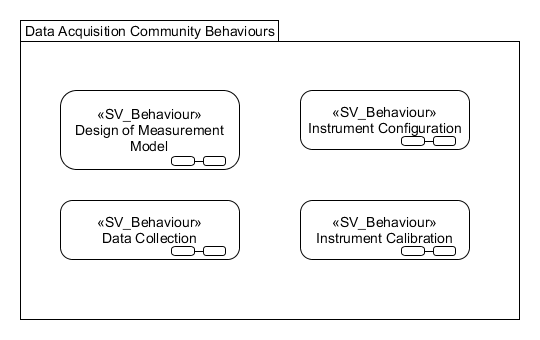
Figure 3 Example of a SV Behaviour diagram
In the example diagram the package represents a community, data acquisition. The community implements four basic behaviours. The RM also provides a detailed description of each behaviour in text.


